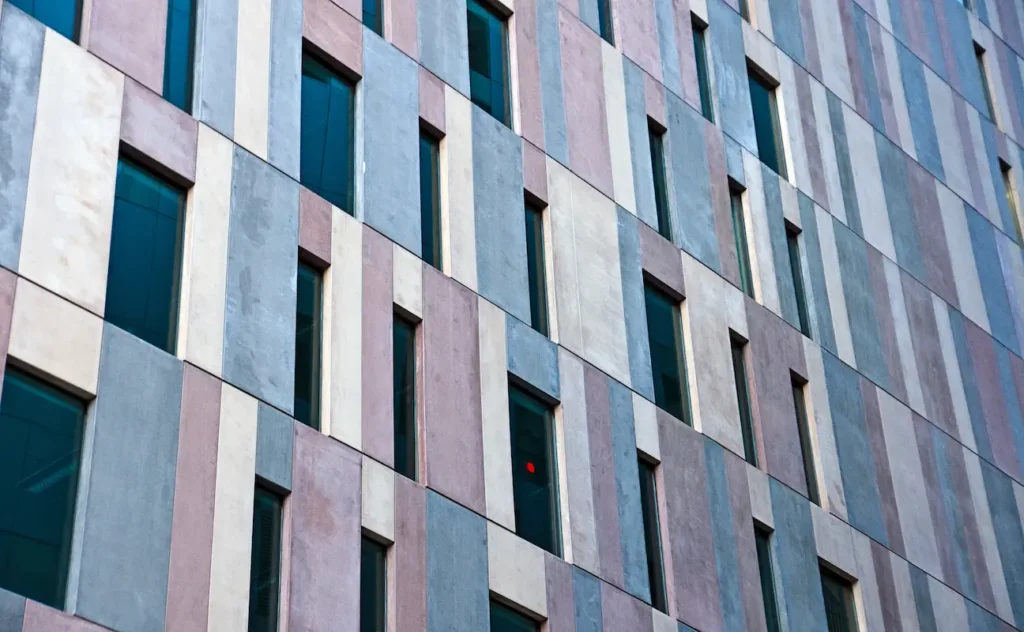Exterior cladding solutions are systems that not only transform the outer surfaces of buildings aesthetically but also provide protection against environmental factors. These systems, which hold an important place in modern architecture, stand out with advantages such as energy saving, durability, and design flexibility.
In this article, we will explore the types of exterior cladding solutions, the benefits they offer, and how they contribute to projects.
Main Goals of Exterior Cladding Solutions
The main goal of exterior cladding is to protect the outer surface of buildings from environmental effects, increase energy efficiency, and provide an aesthetic appearance. Preferred in both commercial and residential projects, these systems can adapt to any project with various material and design options.
Types of Exterior Cladding
Various exterior cladding systems can be used depending on the project requirements. Here are the most preferred types:
1. Metal Cladding Systems
Cladding systems using metals such as aluminum and steel provide a modern and industrial look. These systems are preferred in buildings with high usage due to their durability and long lifespan.
2. Natural Stone Cladding
Exterior cladding systems made with natural stones such as granite, travertine, and marble offer a luxurious appearance. These systems, which combine durability and elegance, are frequently preferred in prestigious projects.
3. Wooden Facade Cladding
Wooden facade cladding is ideal for projects looking for a natural and warm appearance. When properly protected, it maintains its durability for many years. It is commonly used in villa projects.
4. Fiber Cement Boards
Fiber cement panels stand out for their fire resistance. They are also resistant to water and moisture. With various pattern and color options, they are frequently preferred in modern architecture.
5. Ceramic Facade Systems
Ceramic claddings offer both aesthetics and functionality. Preferred in modern architectural projects, ceramic panels provide ideal solutions for large surfaces.
Advantages of Exterior Cladding
Exterior cladding systems not only provide an aesthetic appearance but also enhance the durability of buildings. Here are the key advantages:
- Heat Insulation: Reduces heat loss and provides energy savings.
- Sound Insulation: Reduces external noise and offers a more comfortable interior space.
- Weather Resistance: Provides protection against rain, wind, and sunlight.
- Long Lifespan: Cladding systems made with quality materials maintain their durability for many years.
- Aesthetic Variety: Offers design flexibility with different materials, colors, and textures to suit every project.
Applications
Exterior cladding systems have a wide range of applications:
- Residential Projects: Apartments, villas, residences
- Commercial Buildings: Office buildings, shopping centers, hotels
- Industrial Structures: Factories, logistics centers
- Public Buildings: Hospitals, schools, municipal buildings
What to Consider When Choosing Exterior Cladding?
Choosing the right cladding system plays a critical role in the success of the project. When making the choice, the following factors should be considered:
- Climate Conditions: The material should be suitable for the area’s weather conditions.
- Building Function: Cladding solutions should be chosen according to the different functions such as residential or commercial buildings.
- Material Quality: It is important to choose durable and long-lasting materials.
Exterior cladding solutions are one of the most effective ways to protect and beautify your buildings. By choosing the right system and materials for your projects, you can achieve energy savings and striking aesthetic results.
For more information, you can contact us and plan the most suitable exterior cladding solutions for your project.

